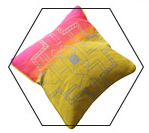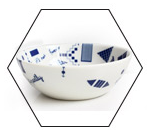How I make my ornaments and patterns: Part 1 – Inspiration

Yesterday I saw a . It was interesting. It was shown how his work process evolves during everyday life. He writes all his scripts and screenplays on a typewriter that he bought for 40 USD when he was 16 years old. He makes changes to the machine written pages using a staple machine and scissors. Also handwritten notes play a great role in his writing process. His work seems to have to do with HAND-WORK, it is a very physical process.
He keeps his notes in the drawer next to his bed. He writes these notes just about anywhere. Actually they are more like hand-scribbles on restaurant bills or paper towels. He uses these notes, when he needs inspiration. Then he re-reads them and uses the ones he thinks fit into his currents project.
There are many parallels between my working method and that of Woody Allen. For example Woody Allen has tried several kinds of movie in the course of his career: comedies, tragic films, etc. He was strongly inspired by European filmmakers like Fellini. Since Woody Allen uses a lot of autobiographic material in his works, the films are born by themselves. He lets the film happen while writing the screenplay. He emphasizes the impossibiliy to predict which lines (or entire films) will work and which won’t and he seems very frustrated by this fact. I feel that similarities exist between what he is saying and my work process.

The way I develop my ornaments is that when I wake up I need an empty head. Like a blank sheet of paper. Everything should be ordered and clear. A lot can be done through ritual and following the course of the process. A lot is done by habit. For example I can do certain tasks only at certain times in the day (probably this is so because of different energy levels in the body during the day). I cannot push things. I jump from activity to activity. Yesterday for example I had a rough plan of what I wanted to accomplish. I started to work with the task I felt I had the most energy for. But when I get tired of one activity I leave it for the moment and go to the next one. In this way I proceed jumping between 4-5 tasks for the whole working day without finishing them all. Maybe in one day one or two get done and some are started off, etc.

Yesterday the tasks were the following: printing of a cushion, sewing for placemats, sewing-corrections for fabric napkins and cushion covers, as well as the design draft for a further cushion, the making of two silk screens and also trial printing works. Some of the tasks I was planning didn’t get started (e.g. writing for the blog and making macaroons).
I get up very early at about 4:00 am to 6:00 am and start to work. This is the time that nobody else in the family is awake and I am alone. It seems to be important for me not to have too many fixed ideas what I am going to do that day. I may start with a very trivial task like making myself a fruit bowl. During this I sometimes jot down ideas for the day and then when the impulse to start working comes I let it. Then it is very clear.
Today I would like to print a big bed that I have ordered for myself for private use (B&B Italia, Tufty Time designed by Patricia Urquiola) – but I know I won’t. I should at least start to make the silk screens to make way for the design inspiration (which is the hardest part). In the back of my mind I am already scanning for ideas about what to print on this bed. It will be done when it is ready. This can take days or weeks. During these weeks I work on other stuff and make the preparations for the idea to be able to pop into my mind (like clarifying the dimensions of the printing surface, ordering the bed, ordering the textiles, etc.). The process of letting the idea come is very complex. Small hindrances push back the design idea.
While waiting for the idea for the big project (bed) my two volunteers – who are working with me this July – and I started to produce small products for my . I see these tasks as a sort of preparation for the bed, since they are a lot smaller, they are also a lot easier. There is much more pressure behind the task of making ornaments for an expensive item like a bed. This is a project I cannot repeat if I mess it up.
The reasons for the idea to be hindered can be small. For example if there are not enough screens in the studio to be able to start printing. This time I want to work more efficiently than I was able to in the last big project (a Sofa by B&B Italia, Tufty Time design Patricia Urquiolafor private use). So I had to measure the screens and calculate the optimal size. This is the first time I will create a large pattern using several screens combined to create the repeat AND at the same time making the repeat fit the fabric width and also the printing squeegee size, etc.). Today I might start to set up these new screens and try them.
I am afraid that this has become a very long article but I have not yet touched the TECHNICAL ASPECTS of how I create my patterns and ornaments. Therefore I have decided to write a series of posts about this theme. This article is the beginning. It is about the inspiration and the work process.
In any case I feel that there is a similarity to Woody Allen. Also for me it is true that the work has to happen by itself. At TED talks there are two interesting speeches about creativity that I can recommend. One by Amy Tan and one by Elizabeth Gilbert.
In my case I only proceed to making when the idea is ripe. I nourish and develop the small impulses, make notes and keep them in my drawer. I cannot tell in advance when it is the exact time for a certain project.
Above you find a picture of my last big project. My printed sofa by B&B Italia.
This post is also available in: German



 Nina Levett creates edgy and provocative tableware and textiles. This blog is about her design process and graphics, ornaments, patterns and inspirations.
Nina Levett creates edgy and provocative tableware and textiles. This blog is about her design process and graphics, ornaments, patterns and inspirations.



